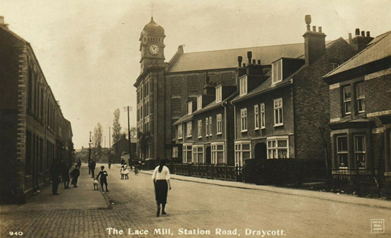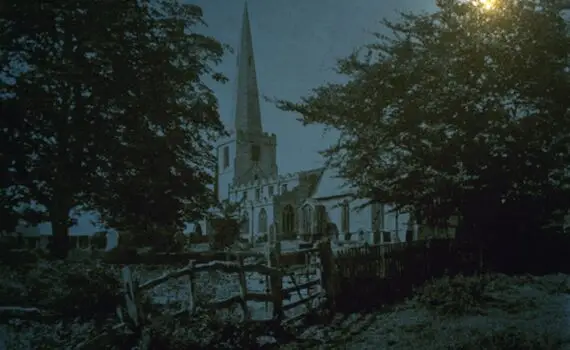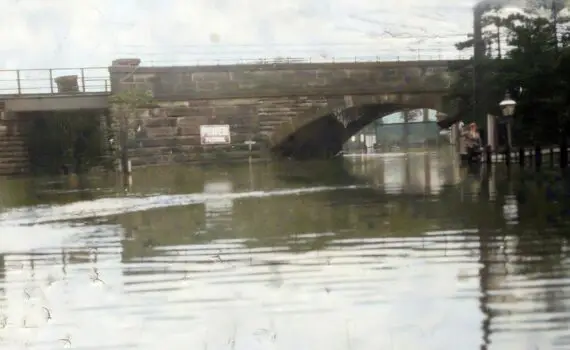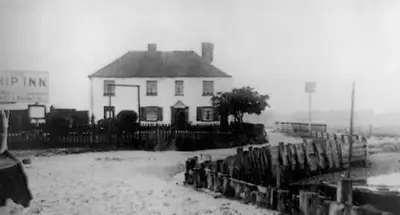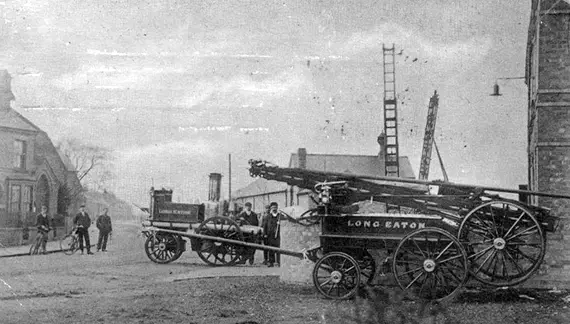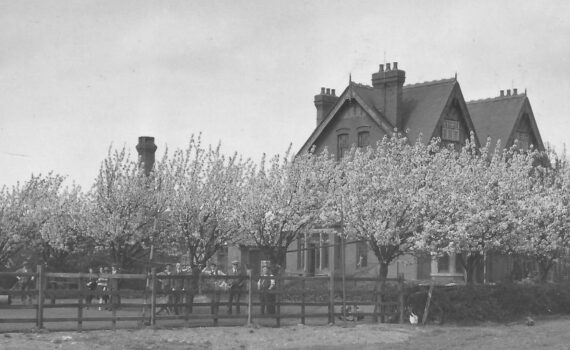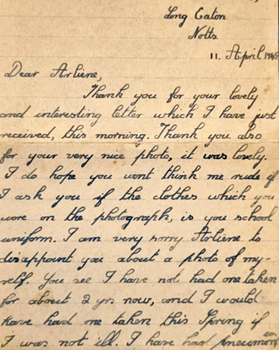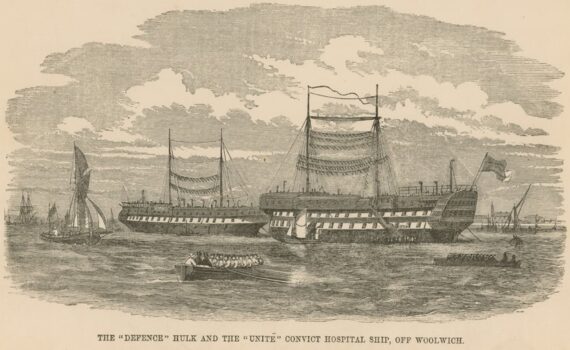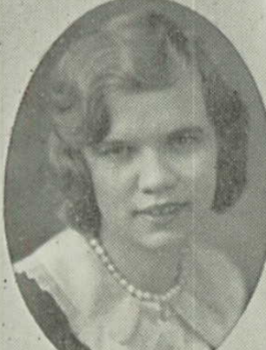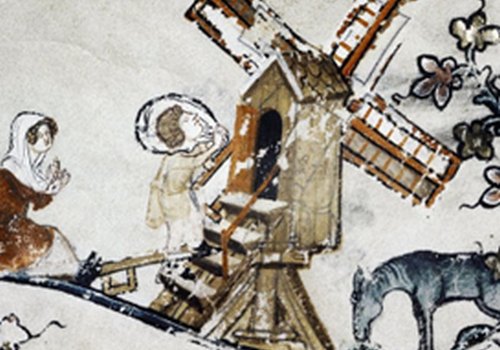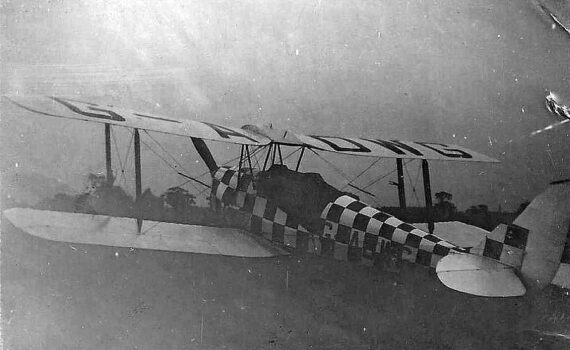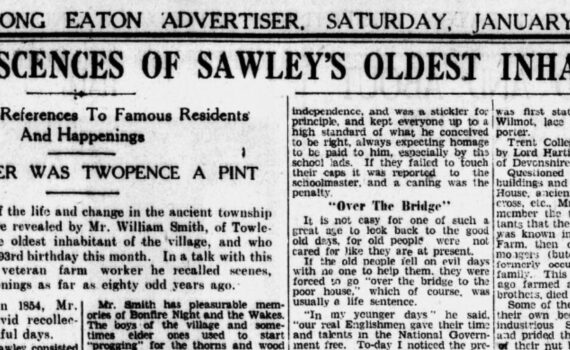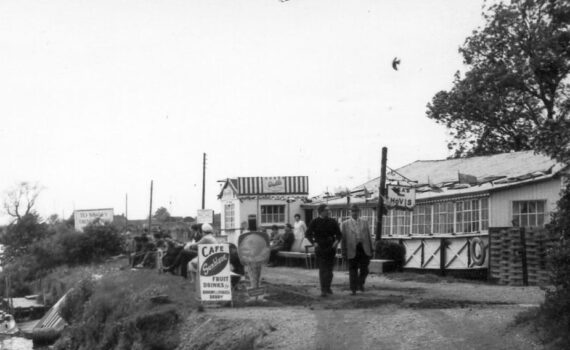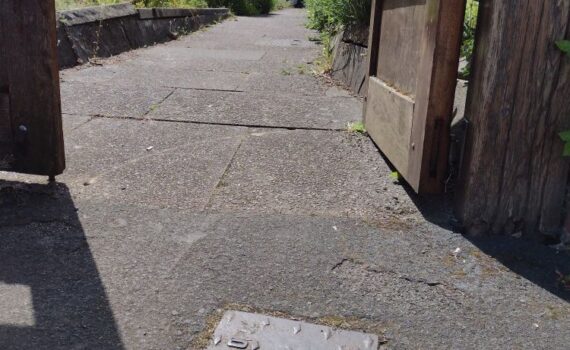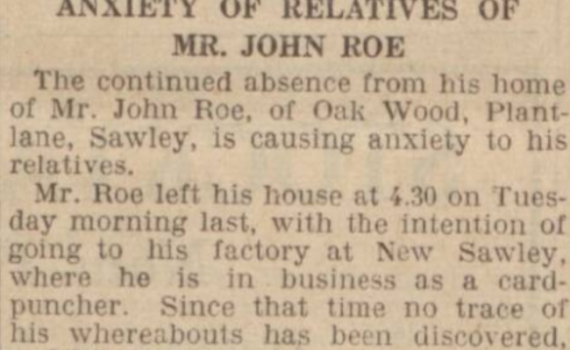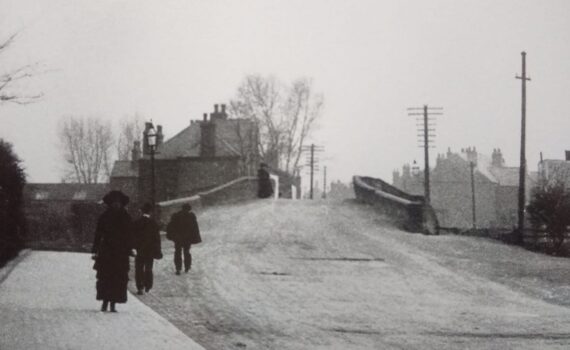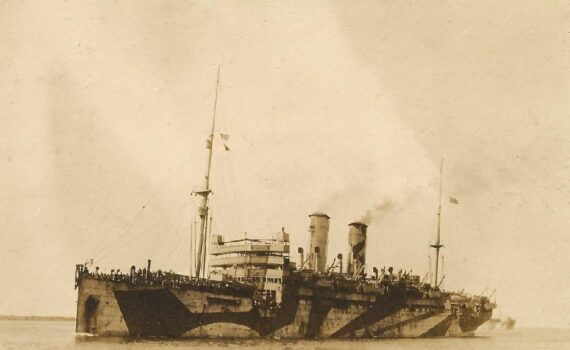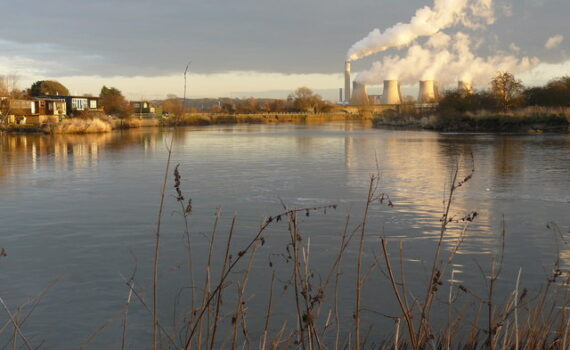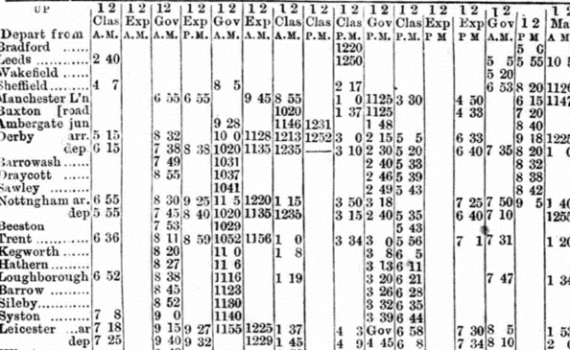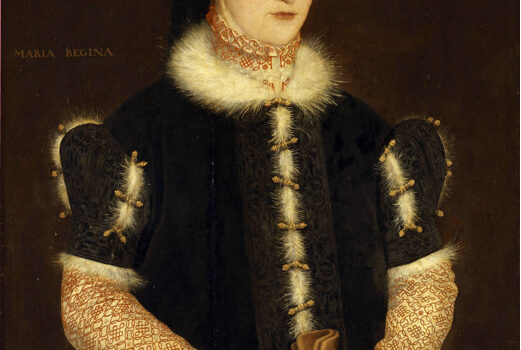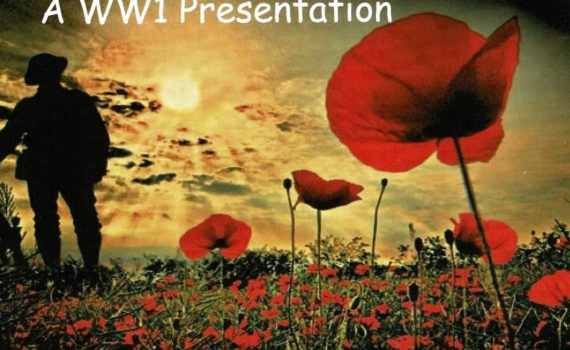Narrow Bridge Cottages were on the bend in the road to Trent Lock, between the road and the footbridge over the Erewash Canal. The cottages dated from the early 19th century, or earlier. There seem to have been 2 large cottages by the bridge and another 6 cottages in a row by the bend road. Originally, they were mostly in Sawley Parish, but from 1921 they were taken over by Long Eaton, along with the rest of New Sawley. In 1900 there was a typhoid outbreak at the cottages. It was attributed to drinking water, but the Sawley Parish Council was told that the property was ‘in a very insanitary condition’. In 1901 the Council heard about an overflowing cesspit at Narrow Bridge Cottages. Although the owner, Mr Tingle, replied that he had just spent £40 on improvements. The houses had been owned for many years by the Tingle family, who’d been boatbuilders. Although in 1904 six houses (presumably the terrace) were advertised for sale as copyhold (a sort of freehold) but don’t seem to have sold. In May 1905 the body of a newborn baby was found in the canal nearby, wrapped in brown paper. Twenty years earlier, the […]
Blog
Many local people will remember the Erewash Princess as a pleasure cruiser on local waterways in the late1960s and early 1970s. But where did she come from, and what happened to her? In 1966 four members of the Inland Waterways Association were fighting to keep the Erewash Canal open. They bought a 2nd hand 36ft boat and named her ‘Erewash Princess’. They formed their own company and planned to run boat trips at weekends and most evenings. The Erewash Princess was 36ft long and constructed from wood, with a diesel engine. She could carry up to 55 passengers. She was built in 1927, and it seems she was operated on the River Severn, and then on the River Dee at Chester. But the details of her early history (and her original name) are currently unknown. In May 1966, one of the new owners – Derrick Alsop, who lived in Toton – started operating a service every Saturday and Sunday between Sandiacre and Trent Lock. It left Sandiacre at 2pm every Saturday and Sunday, stopping at Long Eaton (at the old coal wharf near the fire station) and on to Trent Lock. It then made 3 more runs from Long Eaton […]
Charles ‘Tim’ Tyler (1906-2005) was born in Draycott and visited as a child, but lived in London and then Sussex. In 2000 (aged 95) he wrote to the Sawley Historical Society with his memories of Draycott around the time of the First World War. Charles Tyler’s Letter At the turn of the 20″ century, Draycott was a small village in east Derbyshire, on the old Roman road (now A6005), between Derby and Nottingham. I was born in the village on August 2″, 1906, but my memories only relate to the period 1914-1919, so this needs explanation. Father and mother started their life together in Brussels, where Father was accountant to a small new company called The Gramophone Company — trademark “His Master’s Voice”. After a miscarriage, Mother, pregnant again, had to decide whether to go with Father who has just been appointed as manager of a new branch of HMV in Alexandria, Egypt. Determined to have her children born in England, she chose to go to her brother John’s house in Draycott. He was manager of a cotton mill in the hamlet of Church Wilne, about a couple of miles away on the banks of the river Derwent, which provided […]
On the evening of 31 Oct 1846, a 28-year-old man called Thomas Mullins was travelling from Derby to Nottingham in a third class carriage. He worked as a footman for the Reverend Curzon of Aston on Trent. At some point he realised he’d caught the wrong train, heading for Leicester. As the train slowed down at the old Sawley Station he jumped out, rolled over and one of his legs was run over by 3 carriages. He was taken by train to Nottingham Infirmary (now City Hospital) but died a few hours later. Midland Railway, Derby Station c1840 The inquest heard from John Bailey of Sawley who was a Midland Railway gate (level crossing) keeper on the Sawley-Breaston road and about 19 years old. One of his duties was to deal with trains which stopped there after 7pm. The evening Leicester train did not routinely stop at Sawley, but Bailey used a red light to signal for it to slow down as he had a parcel to give the guard. It slowed to about 2½ mph as he handed over the parcel and confirmed to the guard that no passengers needed to get on. As the train began to accelerate […]
On Monday 10th June 1889 an inquest was held at the Nags Head in Sawley on the death of Henry Cook, who’d been found dead at his aunt’s house two days earlier. The coroner was W.H. Whiston and the inquest jury were W. P. Bennett (chair), Joseph Birkin, Percival Bosworth, William Ward, Edward Kilbourne, Benjamin Allen, George T Lodge, John Bromley, Henry Bonser (landlord of the Nags Head), Albert Robinson, Reuben Bailey and Thomas Ironmonger. They heard that Henry Cook (25) was separated from his wife. Lately he’d been lodging with his aunt and grandmother in Hey’s Buildings in Sawley. He was out of regular work but had been doing odd jobs and gardening. HIs aunt, Emma Smith, identified the body. She said that there had been some ‘unpleasantness’ in the village which had disgraced the family. And as Henry couldn’t pay his way, she’d told him on the Wednesday that he’d have to leave the house. He told a friend, John Staples, that he’d got himself in trouble and didn’t know how to get out of it. He was tired of life, and he’d bought small amounts of laudanum (a tincture of opium and alcohol) at different chemist shops […]
Tom Godfrey was born in 1928 and brought up in Long Eaton. In 1939 his family lived in Manchester Street (between Nelson Street and Wyvern Avenue). He retired from his position at Cambridge University in 1993. In 2011 he sent the following letter to the Sawley & District Historical Society. Much has been written and said recently about the cold weather of the winter of 2010-2011, but the winter of 1946-1947 was much worse. Then there was virtually no home central heating and fuel was in very short supply. Creature comfort was a matter of how much clothing we wore. Outside workers called it two overcoat weather. We all had to accept it as a way of life. Now that I am well past eighty years old, I felt I should write down the memories of my personal experiences of that time before I become unable to pass them on. In the early part of 1947 I was an undergraduate at Cambridge University, living in a room in college. The cold weather proved very unpleasant. Though the cold was a real problem to many we were to a large extent indifferent. Our life carried on as usual as far as […]
In July 1906 Sawley’s Harrington Bridge was being rebuilt. Traffic was using a temporary bridge whilst the damaged centre section of the old bridge was being replaced by a new central pillar and a steel deck. On Tuesday 10th July a 7-year-old boy – Redvers Buller Barton – was fishing for minnows in the Trent. It was either the school holidays or late afternoon after school and several children were playing in the area. Redvers decided cross a plank to reach a boat moored under the bridge (probably the temporary bridge) to make better use of his net. But, leaning over the side, the boat tipped up and he fell in. Another boy, Thomas Noon (aged 9), saw him and called for help. Horatio Allport (aged 11) of Cross Street ran to the spot, crossed the plank to the boat, grabbed an oar and tried to reach the boy, but he’d drifted too far downstream and soon disappeared. The police were called and dragged the river, finding the body on Wednesday night. He was taken to the Harrington Arms and the next afternoon an inquest was chaired by Mr Whiston, the local coroner. The jury found that he’d accidentally […]
Sawley & District Historical Society – 2025 Programme Thursday 23rd January: AGM followed by ‘Smile Please, Say Cheese’ Ian Rogerson gives a humorous and entertaining history of cheese making, offering an opportunity to sample many varieties. Thursday 27th February: The Linby Pancakes, A Viking Army and the History of Pancake Day Gareth Howell brings a seasonal flavour a few days before Shrove Tuesday. Thursday 27th March: Britain’s Bloodiest Day David Skillen, an experienced battlefield guide, brings to life the Battle of Towton 1461. Thursday 24th April: Lady Arbella Stuart David Templeman tells the story of Arbella Stuart, the focus of a plot to replace her cousin James I as monarch in 1603. Thursday 22nd May: In War and Peace John Taylor, an insight into William Cavendish (Bolsover Castle) Saturday 21st June: Guided Tour of Strelley Hall inc. Cream Tea Sunday 20th July: Guided Tour of Papplewick Pumping Station Saturday 16th August: St. Chad’s Short Walk with Tea & Cakes Thursday 25th September: St. Pancras Station Nigel Lowey on a return ticket, relates the saving and restoration of this iconic building. Thursday 23rd October: The Commonwealth Graves Commission Jean Moss, as we approach Remembrance Day, relates the history and work and […]
In the 1870s there were many boatmen in Sawley, working on the river and canals, but Daniel Barkham was a qualified master mariner, who’d been brought up as a fisherman on the Isle of Wight. In 1871 he was still a ship master, but lodging in Ripley with his first wife, Anne (nee Blanchard). After Anne died in 1873, he moved to Sawley. In 1875 he married again, to Ellen Comery. They lived in Narrow Bridge cottages, on the Lock Lane bend, and had 3 children: Parling Barkham (born 1876) Karl Barkham (born 1878) Reginald Barkham (born 1880) They rented the 40-acre ballast hole known as Trent Lake from the Midland Railway. It’s not clear why a master mariner was renting a lake miles from the sea. Perhaps he was hiring out boats (it seems there was a boathouse next to Narrow Bridge cottages) and/or teaching people to sail. In the winter they rented the lake out for skating. Ice skating was quite a big thing locally at the time. There even seems to have even been an ice rink in Long Eaton (Forbes Hole?). Trent Lake, c1884 On Thursday 7th Feb 1881, there had been a thaw, but […]
Samuel Hill was born in Somercotes in 1859. His father William (1832-1903) was a colliery agent, and his mother Eliza was from Shardlow. By 1871 the family had moved to Station Street, Long Eaton and were living with William’s father, a coal merchant. Samuel was in the lace trade, which was booming at the time, as labour in Long Eaton was cheaper than Nottingham and the canal and railway were conveniently placed for the delivery of coal to run the steam-powered factories. Samuel had started to raise money for his own factory whilst still in his teens, but he fell out with his creditors, and it took him 3 years to pay them off. In 1879 he started a partnership with his father. The same year Samuel married Mary Jane Draper in Radford and moved to Regent Street in Long Eaton. In 1882 Samuel and his father had a factory built on Princess Street, near Lime Grove (where the parking for West Park is now), at a cost of £4,000-£5,000. It was a 3-storey building, about 12 windows wide. It was steam powered and had a large chimney. The Hill family had most of the top floor, with half a […]
Having researched a family, we normally include military records on the page about the family, linked from the Families index and (where applicable) from the War Memorial page. But we haven’t completed the long and complicated history of the Leivars family in Sawley yet. So, for Armistice Day, some of the wartime records for the family have been extracted and set out below. John Leivars (1844-1926) known as Jack, was a regular solder in the 1860s and 1870s, serving with the 45th Regiment of Foot (which became the Sherwood Foresters). He took part in the 1868 Abyssinian Campaign. In 1879, Jack qualified for an Army (Chelsea) pension and returned to Sawley, where he married Ann Catliff. In 1924, General Smith-Dorien chatted with him at the Sherwood Foresters Old Comrades Annual Dinner. By 1914 Jack and Ann had 12 children and were living in Chantry Place. Their eldest son John William Leivars (1882-1916) served with 9th Battalion, Sherwood Foresters during the war. In late September 1916 they took part in the Battle of Thiepval Ridge, one of the later stages of the Somme campaign. In mid-November they were at the Battle of the Ancre Heights. A week later, on 26 November […]
In 1900, apart from the Midland Bank at the corner of Tamworth Road, there were only two pairs of semi-detached houses on Wilsthorpe Lane (now 16-22, Wilsthorpe Road). In 1900 Samuel Hill submitted his first plans for a single-storey lace factory opposite St Mary’s Church. It was extended over the following 7 years, including a large house ‘The Limes’ separated from the factory by greenhouses. By 1910 Birchwood Mills (1906) and Atlas Mills (1910) had been completed by other developers, along with Ruskin Avenue and Lime Grove and more houses along Wilsthorpe Lane. The factory was sold to Concordia in about 1925, but the Hill family retained The Limes. * * The story of the Hill family and their factories will be covered in next blog post. * * In 1930 George Hill formed The New Sawley Club Limited at The Limes, with the directors being himself and W. Scott of Victoria Road. Although the Club may have already been operating for a few years. As well as a bar, the club had a bowling green and tennis courts. The club didn’t seem to thrive and by 1933 the tennis courts were being advertised for let. The nearby pond (now […]
The following are transcripts of letters sent by a Long Eaton girl to her pen-pal in America in 1945 and 1946. Sheila Redford was born in Long Eaton in 1929. Her family lived in Bennett Street. She left school at 14 and started work in a factory office in Sawley during World War 2 (perhaps Park Mill on Grosvenor Avenue which was used by Rolls Royce during the war). Arlene Olsen lived in Harrietta, a small town in rural Michigan. After the USA entered the war in December 1941, she helped the war effort by collecting milkweed floss to fill lifejackets. Arlene’s daughter found the letters amongst her mother’s papers and thoughtfully contacted the Sawley Historical Society and sent the letters back to England. The extracts are printed with the kind permission of Sheila’s daughter. 6 Feb 1945 Dear Arlene Very many thanks for your lovely letter, to which I am answering straight away. So, Sergeant Elmore was your music teacher, was he? When he came to talk to us about you boys and girls over there, we asked him if any of you would like to write to some English girls and he gave us your addresses. I […]
Sawley was originally known as Salloe. In the Domesday book it was spelled ‘Salle’. A ‘Salh’ or ‘sealh’ was the Old English (Anglo-Saxon) name for a willow tree. The common varieties of willow, of the type that grow along the Trent, are still called sallow. The name was similar in Old Norse (selja) so there would have been little reason to change it when Sawley was part of the Danelaw. ‘Ley’ at the end of an Anglo-Saxon placename usually means clearing in a wood. But the ‘Salle’ in the (early Norman) Domesday book suggests the modern name just evolved from Salle/Salloe over the subsequent years. But we don’t know the origins for sure. For example, the Old English name for a hill/hillock is ‘hlāw’. And the area around Sawley church is on higher ground. Which would have been very significant to farmers before the flood banks were built. In contrast, Wilsthorpe is clearly a Danelaw (Viking) name. ‘Thorpe’ usually meant a small hamlet within a larger parish, and most ‘..thorpe’ places are still quite small. The first part of a placename was usually the person who held the land. So, Wil or Wifel, or something like that. […]
The Harriman Family Grange Gardens were opposite Sawley Grange Farm, on the other (reservoir) side of Draycott Road, when it used to go to Draycott! Although always referred to as ‘Grange Gardens, Sawley’ it was (just) in Breaston parish. The image above shows an 1890s map superimposed on a modern air photo. The story seems to start with the Harriman family … Thomas Harriman was born in Hathern in 1812. He married Mary Frearson from Sawley in 1838. At first, they lived near Nottingham, but by 1846 they’d moved to Sawley Grange. Their children were: Annie (1842-1898) William (1844-1927) Elizabeth (1846- Mary (1848-1882) Grace (1851-1934) Mary (the mother) died in 1851 probably while, or soon after, giving birth to Grace. In 1860 Thomas got married again, to Zillah Briggs. By 1871 the family had moved to Draycott where Thomas worked as a brewery agent. But Thomas still owned over 12 acres of land, whilst the 3 younger daughters had just over an acre each (Annie was married by then). Elizabeth and Mary were still at home, both working as governesses. Grace (pictured) was probably living at home too, though she was away on the night of the 1871 census. […]
When the ‘London-Yorkshire Motorway’ (the M1) was being designed in the mid-1950s, the plan was for the whole stretch across the Trent near Sawley to be an elevated viaduct of 40ft high arches, – 20 arches north of the Trent and 20 to the south – so as not to block the flood plain. Then, in 1957, a scale model of the whole area was built at the Government Hydraulics Research Station at Wallingford, Berks. The model represented about 5½ miles of the Trent and 1½ miles of the Derwent valleys, including bridges, flood banks etc. The model covered 3,200ft2 (298m2); an area equivalent area to about 1.15 tennis courts, or (in old money) 14.5 London buses. Water was released across the model to represent a real-world flow of 35,000 cubic feet per second (991.09 m³/s) – the worst flood in recent history – which covered the valley to a depth of 3ft over a width of 8,000ft. The object of the modelling was to ensure that building the motorway would not cause the flood level upstream to rise more than another 3 inches. The scientists found that the arches would be far less effective south of the Trent […]
On Tuesday 29th June 1852 a Sawley woman was battered to death in her home by a stranger. John and Sarah Walters lived in Thompsons Barns, a solitary group of three 2-storey buildings around a farmyard on the lane to Church Wilne, about ¼ mile before Wilne Mills. The left building (looking from the road) was their house, the other buildings being sheds. The buildings were owned by Richard Thompson, a Draycott farmer. John Walters was a farm labourer for Mr Thompson. The Murder On Tuesday 29th June 1852, two days after Sarah’s 58th birthday, John was out hoeing turnips in the fields. Sarah left home around 11am, stopping to see the sexton in Wilne before walking to Draycott to do some shopping. She mentioned seeing ‘a bad looking fellow’ sitting in the lane near the cottage and being glad to get past him. On her return she found the man inside her house and left her shopping on the doorstep. Her husband described her as a courageous and spirited woman and the man later claimed she hit him first. But he beat her to death with a hatchet, which was later found in the yard. It was customary for […]
Sawley & District Historical Society: 2024 – 2025 Programme Thursday 20th June: Walk around Spondon led by members of Spondon Historical Society. Saturday 6th July: Visit to Winters Photographic Studio, Derby. Thursday 8th August: Local walk led by Lynne Clifton. Thursday 26th September: My Derbyshire JourneyPhotographer, journalist and broadcaster Ashley Franklin takes a visual trip with special focus on the Derwent Valley Mills Heritage Site. Thursday 24th October: Lord Curzon of Kedleston, Viceroy of IndiaTalk by Danny Wells Thursday 28th November: Why was Alfred called “Great”?Mike Kelley explains how this king laid the foundations for England Thursday 23rd January 2025: ‘Smile please, say Cheese’ The history of cheese with Ian Rogerson.This meeting will be preceded by the Annual General Meeting of the Society. All indoor meetings are held in All Saints’ Church Hall, Tamworth Rd. Sawley NG10 3AB at 7.30 pm. Admission for members is £2. Visitor admission £5, cash or cheque only. For further details please contact telephone: 01332 850321
Henry Dicken (1883-1973) was from near Chesterfield. He was one of 10 children born before his father, Robert Dicken, died in 1891. Five years later his mother (Ann 1855-1920) married Edwin Lomas in Derby. They lived in Normanton (between Osmaston and Littleover) and had two more daughters before Edwin died in 1900. Henry Dicken worked as a lace card puncher. In 1904 he married Ada White (1885-1972) from Spondon. A year or two later they moved to Long Eaton (where there were many lace mills). Around 1908 they moved to New Sawley (where there were other lace mills; or he could have walked across the park to Long Eaton). In 1911 the family were at 18 Myrtle Avenue (not far from the site of the Sawley windmill discussed in a recent post). According to one source, they may also have lived in Golden Row in Old Sawley. The last of their children to be born in Sawley was Nellie (1911-1991). 1912 Henry left Liverpool aboard the SS Merion, bound for Philadelphia, USA. The rest of the family followed later. SS Merion The family settled in Elyria, Lorain County, Ohio (West of Cleveland), beside Lake Erie. In 1931 Nellie Dicken […]
There was once a windmill in New Sawley. The site is between Birchwood Ave and Hawthorne Ave, near the bends on the Twitchell. Sawley Windmill in 1835 – the miller’s cottage is by the road, further along the Twitchell, near the boundary with Long Eaton A later map showing the windmill between the railway (before Sawley Junction) and the canal bridge. It was a post mill – a relatively simple mechanism in which the whole wooden structure had to be moved around a central post to keep the sails facing the wind. Though sometimes the structure would sit on a round brick-built base. The design had been used in England since the 12th century, though its not known when the mill in Sawley was built. Later tower windmills had a fixed structure with just a moveable top section, which meant they could be much taller, with larger sails. One of the few surviving post mills in England is the Cat and Fiddle Mill, near Dale Abbey (built in 1788). Cat and Fiddle © Copyright Garth Newton (Creative Commons Licence). The earliest newspaper reference to the Sawley windmill is 1794. In 1799 the mill was put up for sale. In 1801 […]
In the 1940s and 50s (and probably before) the railway ‘North Curve’ between Sawley Junction and Trent Station was used to accommodate the Royal Train overnight. In August 1940, King George VI and Queen Elizabeth, on their way from London to Derby, had their sleeping coach shunted on to the North Curve, with the local Home Guard providing the guard for the night. In June 1949 Princess Elizabeth and the Duke of Edinburgh were visiting Nottingham and spent the night on the Royal Train on the North Curve. The (now) Queen Elizabeth and Duke of Edinburgh spent a night in the same place on 4-5 July 1955 when attending the Royal Show at Wollaton Hall. Royal Train between Trent and Nottingham in 1949 The Royal Train was there again in March 1957 and October 1958. During one of these visits, Prince Philip wandered into Trent Station. He was interested in the booking office ticket system, and was allowed to produce some tickets. The booking clerk was in trouble the next day when his books did not balance. Prince Philip also decided to walk over to Trent North signalbox. The Trent staff telephoned to warn the signalman he was coming, but […]
Cobham Tiger Moth at Wilsthorpe In September 1937 an Air Display was held in New Sawley. Sir Alan Cobham’s flying circus brought two airliners (including a prototype Handley Page Hinaidi), an autogyro and several light aircraft to a field off Wilsthorpe Lane. Miss Joan Meakin performed aerobatics in a glider, whilst describing her actions over the radio. In another event 3 aircraft with the wings joined together by ribbons, looped their aircraft in formation. This event also saw the first public demonstration of the GQ parachute. Local people were offered flights from 4/ each Handley Page airliner
[A longer version of the following story appeared in the Long Eaton Advertiser in January 1947] Many details of the life and change in the ancient township Sawley are revealed by Mr William Smith of Towle-street, who is the oldest inhabitant of the village and who will celebrate his 93rd birthday this month. In a talk with this hale and hearty veteran farm worker he recalled scenes people and happenings as far as eighty years ago. Born at Sawley in 1854, Mr Smith retains vivid recollections of his youthful days. In his early days, Sawley consisted of 200 houses and less than 800 inhabitants, then chiefly engaged in farming, boating, stocking making, warp net and lace making and blacksmith work. In Smith’s early days Sawley possessed four small one-storey factories containing about ten warp lace machines, owned by the Smedleys and Cliffords and later by Mr John Thorpe, several of these warp machines being subsequently shipped to America. An Italian named Arnabiliano also made warp lace in Sawley. A small number of women possessed lace frames and used to sit outside their homes in summer especially on Smithy-row (now demolished) working designs on plain net from paper patterns underneath. During […]
For many years the wooden Riverside Café stood at Trent Lock, at the end of the footpath that runs from the back of the ‘Trent Lock’ pub, alongside the triangular pond, nearly opposite the Scout Activity Centre. It’s not clear when the Riverside Café was built, but the first café at Trent Lock was opened in 1894 by Jane Rice (1858-1948). Her husband, Thomas Rice, was the ferryman at Trent Lock, whilst Thomas’s father had been running the Erewash Navigation Inn. Mrs Rice started the business at The Cottage/The White Cottage (perhaps the white cottage behind ‘The Cabin’ next to Trent Villa). In 1895 she moved to the newly built Trent Villa (the large Victorian house just west of the ‘Trent Lock’ pub). Trent Villa 1896 1921 After Thomas Maltby drowned in 1900, Thomas Rice took over the Erewash Navigation, with Jane taking over after Thomas died. At some point the wooden café was built beside the Trent on land rented from John Stevenson Grammar at Great Grounds Farm. By 1921 Jane’s son William Henry Rice was running a cafe at ‘The Bungalow, Riverside’, having previously worked for the River section of the Nottingham Fire Brigade. His brother, Tom Rice (1885-1970) […]
This photo from about 1895 shows an outing of local licensed victuallers on the Erewash Canal opposite the Nelson Hotel (now called the Barge Inn). Herbert Maltby of the Erewash Navigation, sitting at the rudder (on the far right) owned the boat, a converted lifeboat. Second from the right is Edward Carter, then licensee of the Blue Bell who later ran Carters’ mineral water in Sawley. Mr Beers of the Harrington Arms is just left of the engine in the middle of the boat. William Johnson (barman at the Erewash Navigation) is standing on the bow. Next to him are Mr Tanser of the Nelson and then Tom Meakin of the Tiger Inn. In 1894 the license to the Erewash Navigation Inn at Trent Lock was temporarily transferred from John Rice to Herbert Maltby, an agent for a brewery in Loughborough. Herbert and his wife Emma were from Hoveringham (by the Trent between Nottingham and Newark). This advertisement appeared in the Long Eaton Advertiser in February 1895. They stayed at the pub nearly 6 years, before leaving in early 1900. By 9th March Emma and their children had already moved to a house in Long Eaton, while Herbert remained to […]
Sawley & District Historical Society: 2023 – 2024 Programme Meetings held in All Saints’ Church Hall at 7.30 pm 28th Sept: ‘The Life & Adventures of Henry Walker RN’The ever-entertaining Stephen Flinders relates the extraordinary life of yet another hisrelatives. 26th October: ‘Kedleston and The Curzons’A representative of National Trust talks about the Hall and the family. 23rd November: ‘The Wars of the RosesGareth Howell talks about one of the most important periods in our country’s history. December: No meeting 25th January: ‘The River Trent, from Source to Sea’Our chairman takes us on a journey from Biddulph to the Humber, looking at places andpeople en-route, and ‘our’ river’s place in the industrial, leisure and social history of ournation. The meeting will be preceded by the Annual General Meeting 22nd February: ‘A Roman Empire Soldier’Jed Jaggard makes a welcome return, appropriately as a Roman Soldier, who could have visitedSawley’s Roman Fort. 28th March: ‘Inspiring Slavic Sisters’The lives of Slavic women, including Catherine the Great, and how they coped with marriage,work, revolution and war, related by Dr. Cathy McAteer 25th April: ‘Medieval Pilgrimage’Actor Tony Perkins dresses in period costume to explain the ‘who’, ‘why’, ‘where’ and ‘how’ ofa Medieval Pilgrim. 23rd […]
The next Sawley & District Historical Society talk is The Life & Adventures of Henry Walker RN related by Stephen Flinders Thursday 28th Sept 2023 @ 7.30pm All Saints’ Church Hall, Tamworth Rd Admission: Member £2 – Visitor welcome: £5 Contact: tel 01332 850321 Full 2023-24 Programme
A reader has spotted several drain and meter covers in Sawley manufactured by S J Claye Ltd of Long Eaton. Samuel John Claye opened a factory in Long Eaton in 1850. The site, between Huss’s Lane and Main Street had been the Manor House farm and the main site continued to be known as Manorhouse Works. It was well known for producing railway wagons for the Midland Railway. Many men from Sawley were employed at the works. Claye was sued for bankruptcy 1882 but carried on business until his death in 1887. He had himself a large house built on the other side of Main Street. The house ‘Belfield’ became Southlands Old People’s Home. It was demolished in 2022. The wagon works carried on as a limited company, but gradually fell into decline and the company was sold in 1937. Most of the buildings were demolished in the 1960s. The main site is now the Tapper’s Harker pub. The meter cover in Sawley is also marked LEUDC, so was presumably installed after LEUDC took over Old Sawley in 1934. But we thought Clayes only made railway wagons. Does anyone know more about other items made by Clayes? And another question […]
At about 4am on 20th January 1931, John Roe of Oakwood Bungalow, Plant Lane got up, complaining of a violent headache and difficulty in breathing. When he left home half an hour later, his wife assumed he was going to work early. But he wasn’t seen alive again. When it was realised that he was missing, dozens of villagers made unofficial searches of the riverbank. On 10th Feb an appeal was broadcast on BBC radio. John Roe had been born in Long Eaton in 1872. In 1895 he married Tacey Ann Clifford from Sawley. Their daughter, Gladys May, was born later that year. At first they lived in Co-operative Street, before moving to Myrtle Cottage on Nottingham Road in Sawley. Their next house was 13 Charnwood Avenue and finally Oakwood on Plant Lane. John was a Jacquard (lace machine) card maker. From around 1911 he had his own card punching business at Birchwood Mills (Wilsthorpe Road). At about the same time, his parents moved to ‘Avondale’ 81 Wilsthorpe Road. His father was a lacemaker, working as a foreman for Fletchers works and attended the nearby St Mary’s Chapel. John suffered from ear trouble. A short time before his disappearance […]
The original bridge over the canal on the road to Long Eaton (just past Magnet Garage) was built at the same time as the Erewash Canal, about 1778, one of 25 bridges along its length. It was an old ‘hogsback’ or humpback bridge and by the late 19th century it had become a bit of a bottleneck. It was just outside the parish boundary and thus the responsibility of Long Eaton Town Council. In 1883 the council received tenders to replace both this (Sawley Road) bridge and the canal bridge on Wilsthorpe Lane (Derby Road), but only the latter was done. By 1901 Long Eaton Council were complaining that Sawley Road bridge was dangerous and a disgrace to the town. If a steam roller driver wanted to go to Sawley, he had to go via Breaston. It didn’t help that when the council ran a water main over the bridge, they raised the footway to cover it, leaving the parapet on one side of the bridge only 28” (71cm) high. In 1905 a Castle Donington man fell over the side late at night and died. In 1911 the old bridge was demolished and replaced by the current structure. Photo […]
Sawley Junction Station (now Long Eaton Station) was opened by the Midland Railway in 1888. The Midland Railway became part of the London, Midland & Scottish (LMS) Railway in 1923. The LMS was nationalised in 1948 and became part of British Railways (known as British Rail from 1965). This is the back cover of the April 1958 edition of British Railways – London Midland Region Magazine.
The Society still has copies of the booklet The Sawley Trail, an illustrated guide to a 1½ mile walk around the village, with historical notes. And other walks in or near Sawley. The booklet is available on Amazon for £34.99, on EBay for £75, or just come along to one of the Society meetings and pick one up for £1.50!
Albert Edwin Smith was born in Castle Donington, where his mother, Eliza’s (Hickinbottom) family lived. Albert’s father was Edwin Smith, a lacemaker from a long-established Sawley family. Albert and Eliza set up home at 141 Sawley Road, Long Eaton. In 1914 he joined the Army, serving with the South Nottinghamshire Hussars; though he may already have been a volunteer trooper before the war. After mobilization, the South Notts Hussars served in the Gallipoli campaign in 1915 and then at Salonika before deploying to Egypt as part of the Desert Mounted Corps. Albert was promoted Lance Corporal. (* Ed. When I was very young I heard that Albert (a neighbour) had been in the cavalry at Omdurman. I assumed he’d been at the famous 1898 battle in which a young Winston Churchill took part in the last full-scale British cavalry charge. But Albert wasn’t that old, so he must have visited Omdurman (in Sudan) during his time with the Desert Mounted Corps around 1917.) In early 1918 the South Notts Hussars gave up their horses and were transferred to the Machine Gun Corps (MGC) and set out for France. But early the next morning, their troopship, the SS Leasowe Castle, […]
As early as 1889 there were discussions about whether Sawley should have gas or electric street lighting, as it had neither at the time. This was rather ambitious, as small-scale electrical supplies were only just beginning to appear in Britain. As it turned out, Sawley only received gas lighting in 1897, about the same time Long Eaton was converting to electricity. The gas lights themselves were donated by Ernest Terah Hooley. A large crowd gathered to see them first lit on 31st March 1897, which was followed by a dinner at the Harrington Arms. The rector (Rev E A Clarke) lit the first lamp. Sawley’s first employed gas lighter was Stephen Smith. Harrington Mill (off Wilsthorpe Road) set up its own electric lighting system in the 1890s. In 1899 Long Eaton council decided to install their own electric cables and lighting, powered by a coal-fired generating plant between Milner Road and the Erewash Canal. This opened in 1903 using a 3-wire direct current system. Three years later it was converted to alternating current. The system was a financial success for the council and mains electricity seems to have reached New Sawley about 1913. In 1931, when the Wilsthorpe Road […]
In 1873, Sawley had plenty of shops, but those who needed to travel, and didn’t have their own horse, would have relied on the railway or local carriers (see below). Bicycles had been invented but didn’t really take off until the late 1880s, with developments like the pneumatic tyre. Roads had originally been maintained by the parish, but the 1862 Highways Act transferred the responsibility for most roads to the County Surveyor. The roads would have used the Macadam techniques, e.g. medium-sized stones at the bottom and smaller stones on top. But they’d have been muddy when wet and dusty in dry weather as they weren’t sealed with tar (tar-macadam, i.e. ‘tarmac’) until the 20th century. Canals and rivers were still used for transporting bulk cargo, although they’d lost a lot of business to the railways. There were no passenger river services, apart from the ferries at Trent Lock (across to Cliff Farm and the path to Red Hill) and Thrumpton (a long walk down Meadow Lane/Pasture Lane, Long Eaton). Carriers The carriers were men with horse-drawn wagons who provided a regular service, usually on market days, to towns or cities, and then back later the same day. In more […]
All meetings are held on a Thursday in All Saints’ Church Hall at 7.30 pm 22nd September – Bricks and Mortals Our chairman takes a look at some of Sawley’s buildings and the lives of their occupants. 27th October – St. Petersburg Dr. Cathy McAteer relates the story of this fabulous and fascinating city. 24th Nov. – The story of Boots the Chemist Chris Weir describes the origins and growth of this industrial giant. 26th January – 40th Anniversary – ‘More Bits and Bobs’ Bob Neill brings another box of puzzling antiquities for us to identify. 23rd February – ‘The Fall of Saxon England’ Mike Kelley describes the events leading up to the Battle of Hastings. 23rd March – ‘An Introduction to Heraldry’ John Titterton explains the rudiments of understanding armory. 27th April – ‘My Derbyshire Life’ Renowned local journalist and photographer Ashley Franklin presents fascinating facts, stories and photographs. 25th May: ‘The Life and Poems of Lord Byron’ Hugh Sharp concentrates on the life of the poet and how events and places influenced his writing. June, July and August – Outings to be arranged Membership fees: £12 + £2 per meeting Visitor fees: £5 per meeting 2
The next Historical Society event is a talk about Bess of Hardwick by Julie Ede. 26th May 2022 starting at 7.30pm. Cost is £1.50 for members, £4 for non-members. Church Hall, by All Saints Church, Old Sawley NG10 3AT After 26th May, the next scheduled talk is 22 Sep 2022 – ‘Bricks and Mortals‘ by Graham Grammer
Magnet Garage (now Long Eaton Garage Services) is on Tamworth Road, just before the Erewash Canal Bridge. In 1920 the proprietor was Albert Robert Bott. He was born in Milford in 1881. His father was a traction engine maker and Albert started work as an engine fitter. During the Great War he served with the Tank Corps before transferring to the Royal Flying Corps and becoming a photographer at No.1 Aeroplane Supply Depot at St Omer, France. In about 1928 John Thomas (Jack) Allen took over the garage, having previously worked for Rolls Royce in Derby. He was born in Long Eaton but grew up in Myrtle Avenue, New Sawley. In 1939 he was living nearby at 58 Tamworth Road. He was still running the garage in the late 1950s. The nearby Sea Scout facility next to the canal was opened in about 1956,
Between 1934 and 2000 Sawley did not have its own council and the signs by the roads entering the village said LONG EATON. In 1981 two local lads decided to fix that. One of them now runs this website.
Here are some advertisements from the 1730s and 1750 found in the Derby Mercury newspaper. Whilst its not (yet) possible to work out which houses are referred to; it’s worth looking at the meaning of some of the terms used. The Derby Mercury ran from 1732 to 1900. From 1882 to 2008 Sawley’s local paper was the Long Eaton Advertiser. Messuage. This means a house together with its outbuildings and adjacent land. The legal definition is still current, but the term was often used in adverts for houses in the 18th and 19th century. Lady Day (the Feast of the Annunciation) is 25th March. It is the first of the English quarter days (the others being Midsummer Day (24 June), Michaelmas (29 September) and Christmas (25 December). The cross-quarter days are Candlemas (2 February), May Day (1 May), Lammas (1 August), and All Hallows (1 November). Until 1752 Lady Day was the first day of the civil year in England, Wales and the American colonies (from 1752 it became 1 January to harmonise with Scotland). In the same year the Julian calendar was replaced by the Gregorian calendar, which meant dates advanced by 11 days. So, the ‘old’ Lady Day […]
Society AGM followed by Bob Neill – More Bits and Bobs A quiz about the objects from my grandfather’s shop and my grandmother’s house Monday 27th January 2020 at 8pm, All Welcome, Members Free, Visitors £4 Sawley Church Hall, Tamworth Road, Old Sawley
Please note this is not a valuation evening. Monday 25th November 2019 at 8pm. All Welcome. Members £1.50 / Visitors £4. Sawley Church Hall, Tamworth Road, Old Sawley
Monday 28th October 2019 at 8pm. All Welcome. Members £1.50, Visitors £4. Sawley Church Hall, Tamworth Road, Old Sawley. Full poster.
A look at the memorials of All Saints Church that commemorate some of the interesting people who have lived and worked in the community of Sawley. Monday 23rd September 2019 at 8pm. All Welcome. Members £1.50 / Visitors £4.Sawley Church Hall, Tamworth Road, Old Sawley Link to Poster
SAWLEY AND DISTRICT HISTORICAL SOCIETY presents a talk by Julia Powell on artist Dame Laura Knight. Monday 27th May 2019 at 8pm. All Welcome. Members £1.50. Visitors £4. Sawley Church Hall, Tamworth Road, Old Sawley Poster
SAWLEY AND DISTRICT HISTORICAL SOCIETY presents a talk by Rod Pearson – When Mat & Mel Came to Town. Ordnance Survey in South Derbyshire in the 19th Century. Monday 29th April 2019 at 8pm. All Welcome. Members £1.50, Visitors £4. Sawley Church Hall, Tamworth Road, Old Sawley. Poster
SAWLEY AND DISTRICT HISTORICAL SOCIETY presents a talk by Andy Smart – Nottingham’s Theatre History. Monday 25th March 2019 at 8pm. All Welcome. Members £1.50, Visitors £4. Sawley Church Hall, Tamworth Road, Old Sawley
SAWLEY AND DISTRICT HISTORICAL SOCIETY present a talk by Jo Golby – Top To Toe, The Price of Vanity. Monday 25th February 2019 at 8pm. All Welcome. Members £1.50; Visitors £4. Sawley Church Hall, Tamworth Road, Old Sawley
Event: Sawley And District Historical Society AGM To be followed by an illustrated talk by Martin Garnett: The Medieval Longbow Monday 28th January 2019 at 8pm All Welcome Members Free Visitors £4 Sawley Church Hall, Tamworth Road, Old Sawley



